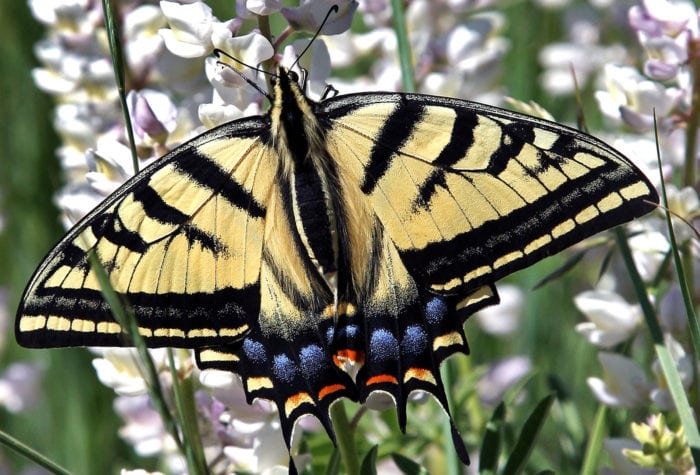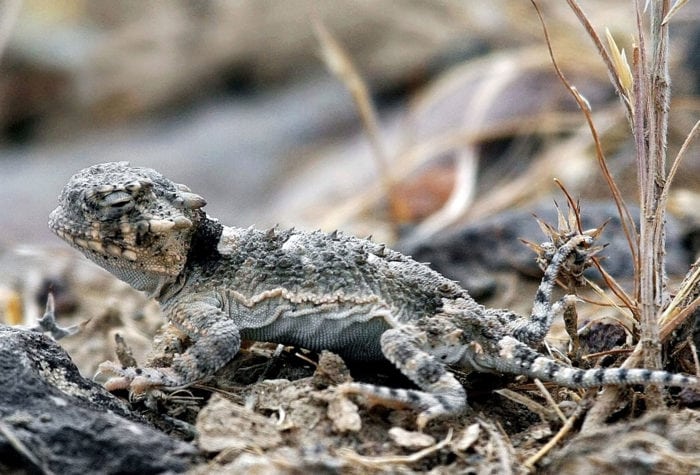South Fork Riparian Planting
Eleanor Burke
Organizer: Jefferson Jacobs, Beth Macinko
Dates: May 11- May 14, 2023
Region: Central Oregon
Difficulty Rating: Level 3: Challenging
Maximum Group Size: 35 participants
About the place
This project takes place on the traditional lands of the Northern Paiute, Wasco and Warm Springs people. Many Indigenous peoples live in Oregon’s high desert region today, including members of the Burns Paiute Tribe, the Confederated Tribes of Warm Springs (Wasco, Warm Springs and Paiute), the Klamath Tribes (Klamath, Modoc and Yahooskin) and the Fort McDermitt Paiute and Shoshone Tribe.
The South Fork of the Crooked River has its source just to the south of the South Fork Crooked River Wilderness Study Area (WSA). After the river carves its way north through the canyon in the WSA, it passes through a patchwork of BLM lands and private ranches before reaching the main stem of the Crooked River. The South Fork has been the historic home to anadromous fish, and has even been the site of successful redband reintroduction efforts in recent years. However, due to the eradication of beaver, riparian habitat loss from overgrazing, and irrigation withdrawals dewatering the creek, the river’s water temperatures have risen and habitat quality has plummeted.
About the weekend
Even though this is a 4-day trip, you do not need to be available for all 4 days, although volunteers who can stay the duration are definitely encouraged! Following the trip registration process, stewardship staff will follow up to learn more about your availability, please only sign up if you can contribute at least 1 full day of work to the project.
We like to make sure volunteers are aware of how important their work is, how it fits into a larger strategy in the watershed and region, and have the right information to do the work itself as well as possible. Each evening at dinner time we provide campfire orientations about the work day to come and discussions about the impact and strategies of the work, as well as the natural history background guiding those concepts. People are also free to use their non-work time in other ways they may feel are most rewarding such as exploring on their own or finding a quiet bank of the river where they can relax and watch the water flow by. In general, work will start with a quick 5 minute carpool to a 30 minute, level hike to get to the worksite. We will be away from camp all day, with the aim to head back to camp each afternoon at around 4.
This is an accessible trip; please let us know if you have special needs to be able to attend this trip.
About the stewardship work
Through a multi-pronged approach with private landowners, land trusts and federal land managers, ONDA is spearheading a watershed-wide effort to improve the ecological state of affairs for the South Fork Crooked and the wildlife and people who depend on it. ONDA is working to seek Wilderness protection for the South Fork Crooked WSA, and Wild and Scenic River designation for the river itself. ONDA is also working to improve grazing practices within the river corridor portion of the WSA which is a designated Area of Critical Environmental Concern. In addition, ONDA has been working for almost a decade on active restoration projects on private and land trust properties along the river. The landowner of the land where we will be working has removed all grazing from this sizable property (the “Jake Place”) allowing for unique restoration opportunities which have in turn inspired the BLM to collaborate with ONDA on restoration projects adjacent to the Jake Place.
The objective of this trip is to plant about 5,000 native plants. The planting itself will be low impact, in that we will be placing 4-foot long cuttings into pre-augered holes, and then just back-filling the holes. Nearly all of this work can be done while standing comfortably, kicking and tamping dirt into the holes. We will also be building exclosures (fence) to keep deer, elk and beaver from damaging the new plants until they can sustain browse pressure. As a final touch we will also be adding cardboard weed barrier to the exclosures to reduce competition from weeds. This work involves carefully spreading out cardboard squares, and then covering the surface of the exclosure with about 2 inches of soil. No experience is necessary; We will teach you everything you need to know to work safely and ensure a high chance of survival for the plants. There is ample opportunity to work at your own pace and on tasks that work best with your physical capabilities.
The work will involve mechanized machinery (an auger and a tractor) for digging the holes while we are planting.
View the map.
View pictures from this trip last year.
View local news coverage from this trip last year.
Trip timeline
- Thursday May 11, 5 pm: Meet at the Jake Place on the South Fork of the Crooked River. This allows time for setting up camp, getting dinner, and a quick orientation about the plan for the coming day.
- Friday May 12, 8 am to 4 pm: Activities during the day will consist of planting and preparing cardboard mats for the plants. 5 minute carpool to a “trailhead” to hike 30 minutes to the work site along a level dirt road.
- Saturday, May 13, 8 am to 4 pm: A full day of planting/cardboarding/fencing at the work site.
- Sunday, May 14, 8 am: We will pack up camp after breakfast and head home.
Camp
The landowner has a great camping area of scattered junipers along the river where we can spread out. However, there are really no particular improvements other than a fire pit and some tables. ONDA will provide some additional amenities such as shade/rain tarps, extra chairs, and porta-potties. The access road is an unmaintained dirt road, but it is not too much for a Subaru, or even a regular sedan driven carefully (in good weather). Small campers or campervans are welcome. Please let us know if you are arriving with a camper so we can plan accordingly.
Difficulty
While there will be the opportunity to work as hard as you like, carrying buckets of dirt and building fence, there is ample opportunity to contribute to the success of the project with much less physical exertion. We will have a wide variety of additional tasks available to rotate through. As always, everyone is encouraged to work at their own pace.
Participant responsibilities
Participants are responsible for their own food and camping gear, as well as transportation to and from the trip. Sturdy off-trail ankle-high boots are required for this trip. Participants should be prepared with clothing layers, food and water to spend the day away from camp to conduct the work. We recommend bringing your own work gloves to provide a comfortable fit, but ONDA will also provide work gloves for all participants. Each person will need to bring drinking and cooking water for the trip, since none is available on site.
Gear provided
ONDA will provide work gloves if you don’t have a pair, all the tools needed, excellent guidance in the field, and a few group camping items to make things more comfortable (chairs, tables, campfire materials, water, shade/rain tarp, and porta-potties).
Registration
An ONDA registration application and medical form are required for this trip.
Apply Now
You will receive a confirmation email within 2 weeks of submitting your form. The confirmation email will provide information regarding which trips you are on the “participant list” for, and which trips are full, and therefore you have been placed on the “wait list.”
Six weeks before the start of the trip, the trip leader will send out an RSVP to make sure everyone is still able to participate. Based on RSVPs, open spaces will be backfilled with people from the waitlist.
Three weeks before the trip start date, registered and confirmed participants will receive driving instructions, maps, and additional information in an email sent by the trip leader
If you have any questions in the meantime, please don’t hesitate to contact the trip leader.
Your Trip Leader
This trip will be led by Jefferson Jacobs. If you have any questions or need additional information you can contact him via email at jjacobs@onda.org
Meet JeffersonRestoring Desert Ecosystems
ONDA works with partners, communities and the public to improve habitat quality, healthy ecosystems, clean water and biological diversity in the high desert’s most ecologically important areas. What We Do […]
Read More
